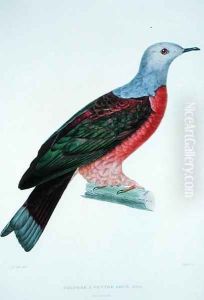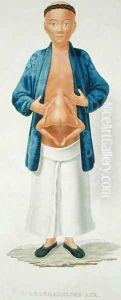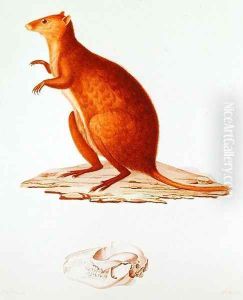Pretre, Jean Gabriel Paintings
Jean Gabriel Prêtre was a French natural history painter who was born in 1769, in the city of Nyon, which is now in Switzerland. He was particularly renowned for his highly detailed and vivid illustrations of animals and plants, making significant contributions to the field of natural history illustration during the late 18th and early 19th centuries.
Prêtre moved to Paris at a young age to pursue his passion for art. He quickly became involved in the thriving community of naturalists and artists in the city. His talent in depicting the natural world was recognized early on, and he began to receive commissions to illustrate scientific publications.
Throughout his career, Prêtre collaborated with some of the leading naturalists of the time. One of his most famous associations was with Georges Cuvier, a prominent French naturalist and zoologist. Prêtre produced illustrations for Cuvier's works that were praised for their accuracy and their contribution to scientific understanding.
In addition to working with Cuvier, Prêtre is perhaps best known for his work on the illustrations for the natural history volumes of the 'Description de l'Égypte', a monumental publication that documented the findings of the Napoleonic expedition to Egypt from 1798 to 1801. This work was of immense scientific importance and helped to introduce European scientists to the flora and fauna of Egypt.
Prêtre's ability to render the intricate details of plants and animals with precision made his illustrations valuable tools for scientific study. His work was not only appreciated by the scientific community but also by the public, as it was among the era's most accurate visual representations of exotic species.
Jean Gabriel Prêtre's legacy lives on through the countless illustrations that grace the pages of scientific texts. His contributions have helped to shape the field of natural history illustration and have provided a visual record of species that, in some cases, have become rare or extinct. Prêtre passed away in 1849, leaving behind a body of work that continues to be admired for its beauty and scientific value.


